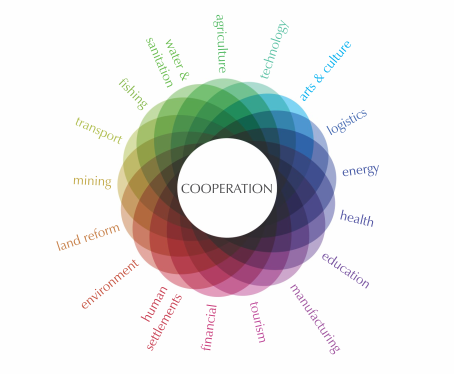Biodiversity patterns and ecological processes are connected in complex ways that cross realms and human-constructed boundaries. Human activities in different sectors, each with separate policies and practices, can impact on the same biodiversity and ecological infrastructure in different ways. Coordinated and collaborative planning and decision-making is essential to account for this interconnectedness.

Biodiversity provides benefits and essential services to people, like food, clean water and medicines, and enriches our cultural, spiritual and recreational practices. These services are dependent on intact ecosystems, healthy species populations and genetic diversity. The interconnectedness of biodiversity and human wellbeing is highlighted globally through the three objectives of the Convention on Biological Diversity: conservation of biodiversity, sustainable use of the components of biodiversity, and the fair and equitable sharing of the benefits arising out of the utilisation. In South Africa, this interconnectivity is featured in the White Paper on the Conservation and Sustainable Use of Biodiversity, which provides a vision for an inclusive, transformed society where biodiversity conservation and sustainable use ensure healthy ecosystems and equitable benefit-sharing for present and future generations.
Biodiversity is fundamental to achieving South Africa’s national objectives of inclusive economic growth, job creation, and improved service delivery and wellbeing for all citizens. The National Development Plan calls for collective responsibility towards the biodiversity that underpins these national goals. The National Biodiversity Strategy and Action Plan (NBSAP) can provide an opportunity for all actors in the whole-of-government and whole-of-society approach to work together and contribute to these national goals by strengthening the conservation of biodiversity; promoting and expanding the benefits derived from biodiversity; embedding biodiversity considerations across all sectors and levels of government and society; and strengthening financial and technical support for effective implementation.
South Africa’s policy and legislative framework includes several tools to facilitate cross-sectoral planning and decision-making. Tools like Spatial Development Frameworks (developed at local, provincial and national level) and Marine Spatial Planning require multi-sectoral approaches to balance competing needs. Implementation of these frameworks, while sometimes challenging, can be improved by developing partnerships and working collaboratively. Some institutional arrangements already support this approach, for example, the Inland Water Ecosystem Liaison Committee, convened by the Department of Water and Sanitation, brings together all organs of state with shared mandates for managing and conserving rivers and wetlands. At the subnational level, catchment partnerships are an example of bringing together stakeholders from across government, civil society, research and the private sector to address natural resource challenges in a way that supports social and economic development. Collaborative action across government, all sectors and society towards a more nature positive and inclusive pathway will enable interconnectedness, resulting in thriving ecosystems, species and genetic diversity driving economic growth and wellbeing for all.